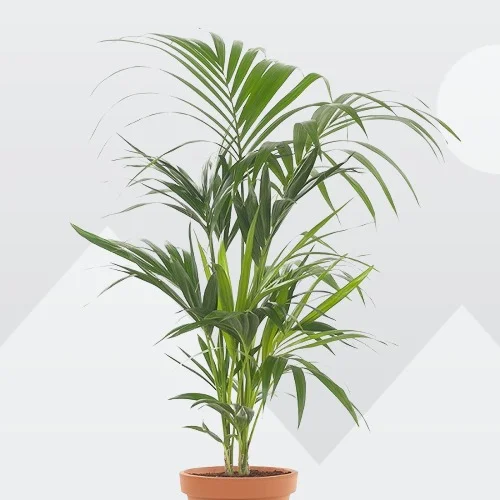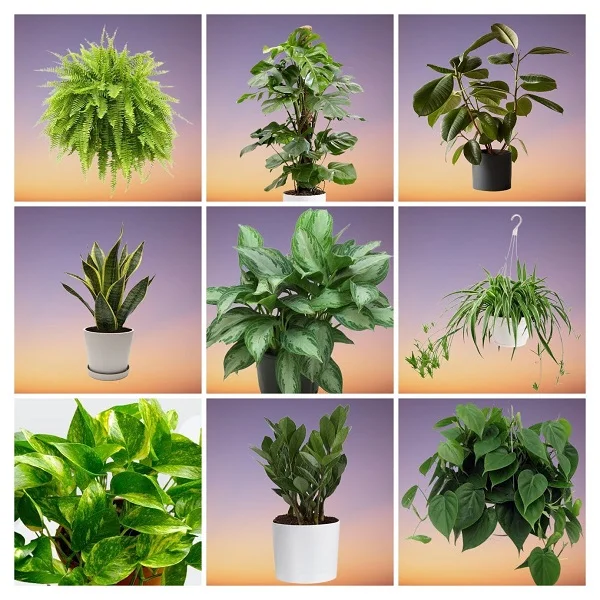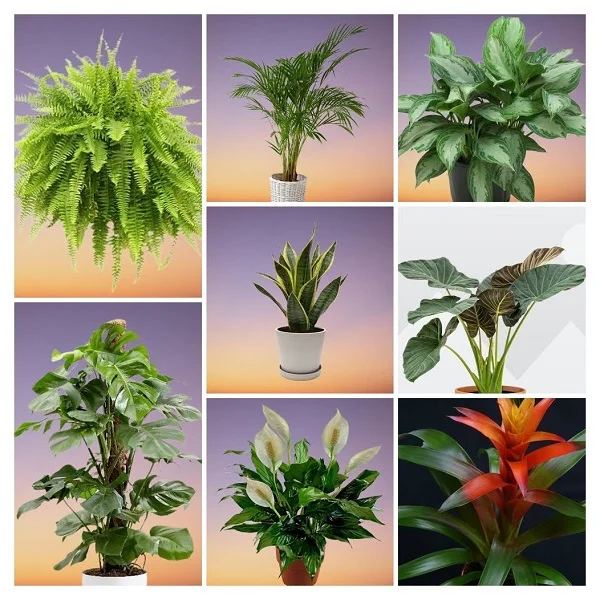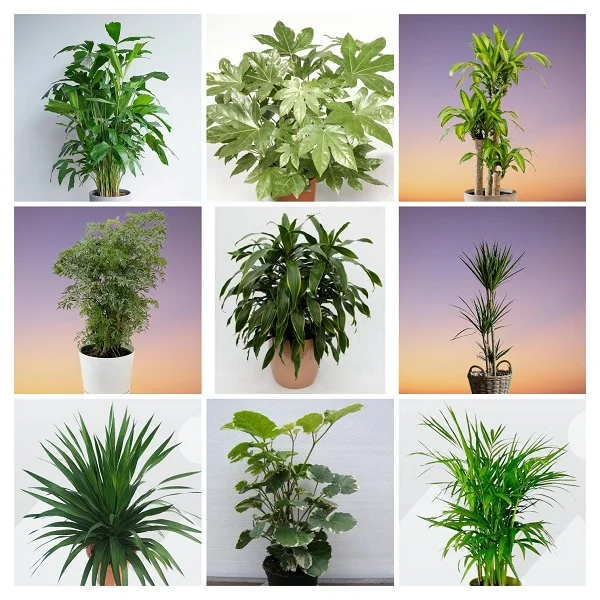Kentia Palm (Howea forsteriana) Care Indoors, Propagation and Common Problems
Some links in this post may be affiliate links
Kentia Palm (Howea forsteriana) requires bright indirect light, average warmth, moderate humidity and moderately moist, rich, well-drained, all purpose soil coupled monthly feeding in the growing season.
Howea forsteriana also called Paradise Palm or Thatch Palm is among the popular palms and bears feathery fronds which are divided into soft, drooping leaflets on either side of the midrib.
Thatch Palm belongs to a group of palms (called feather palms) which produce fronds which are divided on either side of the midrib into leaflets, where the leaflets may be soft and drooping.
The Paradise Palm has a thin, slender trunk with feather shaped drooping fronds which produce wide leaflets.
Kentia Palm has a high tolerance to shade, low humidity, infrequent watering and cool temperatures. It is one of the best low-light plants for the shaded spaces.

Botanical name: Howea forsteriana
Synonym: Kentia forsteriana
Family: Arecaceae
Common names: Kentia Palm, Paradise Palm, Thatch Palm
Origin
Howea forsteriana is native to Lord Howe Island off the Coast of Australia.
Size
The Kentia Palm is relatively slow-growing, eventually growing up to 8 feet under good indoor growing conditions. The trunk is dark-green when young and turns brown as it ages. Its fronds are less drooping and is generally taller than its close relative Howea belmoreana (Sentry Palm) which grows to a height of 3-4 feet.
Toxicity
According to ASPCA, Howea forsteriana is non-toxic to both humans and pets. It is safe to grow indoors.
Where to Buy
If you would like to add this palm to your collection, it is readily available online on Etsy (Link to Etsy).
Howea forsteriana Care Indoors
Kentia Palm (Howea forsteriana) prospers in bright indirect light, average warmth of 16-280C, moderate humidity of 50-55% and moderately moist, fertile, well-drained, all purpose soil coupled monthly feeding during the growing season.
Howea forsteriana requires pruning to keep it neat and discourage pests and diseases infestation. Repotting is only needed when it becomes pot-bound. Keep reading for more on these growing conditions and how to achieve them.

Light Requirements
Kentia Palm grows best in bright, indirect light. Keep it away from direct sunlight as it can cause the fronds to develop a yellowish color instead of the beautiful green color.
Thatch Palm can tolerate some shade but it will grow much slower. You may grow the palm under a grow light if the natural lighting in your home is not adequate. Check out these full spectrum grow lights on Amazon.
Rotate the pot regularly to make sure that the palm receives light on all sides for uniform growth and to prevent lopsided growth.
Watering
Water Kentia Palm liberally during the growing season while allowing the top 2-3 inches of soil to dry out between waterings to keep the soil moderately moist.
Decrease watering during the cold season and maintain the soil slightly moist but do not allow the soil to dry out completely.
Paradise Palm like all palms, is sensitive to chlorine and other chemicals dissolved in water. Therefore, water it with chlorine-free water only.
Take care not to wet the base of the palm as it can lead to rotting and eventual death. Do not allow it to sit in soggy soil as it may lead to root-rot and loss of the palm.
Temperature and Humidity
Howea forsteriana thrives in average warmth of 16-280C. If the temperature is comfortable for you it is ideal for the palm. Keep it away from cold draft as they can lead to brown leaf tips and spots.
Kentia Palm requires a humidity of 50-55%. Where the humidity is too low, set the pot on a wet pebble tray or use a cool mist humidifier in to keep the fronds looking green and healthy. Learn how to raise humidity for houseplants.
Clean the mature leaves regularly by damp-wiping with a soft cloth to get rid of dust as well as discourage pests and diseases.
Fertilizer
Feed Kentia Palm with a liquid fertilizer, rich in micronutrients on monthly basis during the growing period. Stop feeding in the cold season as the growth is reduced at this time.
Take care not to overfeed the palm as it can lead to yellowing of the fronds. To prevent fertilizer build up which is indicated by leaf burn and brown spots, regularly flush out the soil by running a stream of water through until the water comes out through the drainage hole.
Potting Soil
The best soil for Howea forsteriana should be rich in organic matter and free-draining to prevent it from getting soggy while providing the required nutrients. All purpose potting mixes are ideal for this palm.
Repotting
Repot Kentia Palm only when it is extremely root-bound and take care not to damage the roots. Avoid too frequent repotting as it is sensitive to root disturbance.
Use a pot 1-2 sizes larger than the current one. Make sure that the pot has a drainage hole to prevent the soil from getting soggy as it can lead to root-rot. Check out these Pots with Multi Mesh Drainage Holes on Amazon.
Pruning
Pruning Kentia Palm involves cutting away the old brown and dry fronds near the soil surface to keep the plant neat as well as minimize pest and disease infestations. Cut away any flower stalk immediately to prevent the palm from wasting energy on developing the flowers.
Propagation
Kentia Palm (Howea forsteriana) can be propagated from seeds but this is difficult and the palm rarely produces seeds when grown indoors. It is advisable to buy a new plant from the breeders.

Howea forsteriana Problems
Kentia Palm (Howea forsteriana) problems include brown leaf tips, browning leaves, yellow leaves, pests and diseases among others. Keep reading for more on these problems, their remedies and solutions.
Pests
Kentia Palm is prone to mealy bugs, spider mites and scale insects. Regularly check underneath the leaves for these pests. Isolate the affected palm to prevent spread to the other plants. Read more on how to identify and treat pests in houseplants.
Brown leaf spots
Brown leaf spots in Kentia Palm are due to two possible causes. Remove the affected leaves and discard to minimize spread to the rest of the plant. One possible cause of brown leaf spots is overwatering.
Keep the soil moderately moist during the growing season and slightly moist in the cold season but never soggy. In addition, ascertain that the pot has a drainage hole and the soil is free-draining to avoid getting soggy soil.
The second possible cause of brown leaf spots in Paradise Palm is sudden drop of temperature due to cold drafts. Keep it away from drafty conditions and maintain an average warmth of 16-280C. Check out this guide on understanding temperature for houseplants.
Brown leaf tips
Brown leaf tips in Kentia Palm are due to four possible reasons. Trim off the brown tips with sterilized scissors. One possible reason for brown leaf tips is dry air (low humidity) as the palm thrives in a humid enviroment To increase humidity, set the pot on a wet pebble tray or grow the palm in a well-lit bathroom and other moist areas in the home.
The second possible reason for brown leaf tips in Kentia Palm is underwatering which means there is too little moisture in the soil for the plant to take up. Maintain the soil moderately moist during the growing season. Reduce watering during the cold season but do not allow the soil to dry out completely. Learn more on how to water indoor plants the correct way.
The third possible reason for brown leaf tips in Paradise Palm is cold drafts like windy doors and windows, cold air from air conditioning units among others. Keep it away from drafts to maintain an average warmth of 16-280C.
The fourth possible reason for brown leaf tips in Kentia Palm is damage by touching. Place the palm away from the line of traffic.
Brown leaves
Brown leaves (fronds) in Kentia Palm are due to two possible reason. Naturally, the lower leaves may turn brown and droop due to age. Remove the brown leaves by cutting and not pulling to avoid unnecessary injuries.
If the browning is general and accompanied by rotting, the cause is root-rot disease which is promoted by soggy soil. Always ensure that the pot has a drainage hole and the soil is free-draining to prevent it from getting soggy. Learn how to treat root-rot in houseplants.
Yellowing leaves
Yellowing leaves in Kentia Palm are caused by underwatering. Keep the soil moderately moist during the growing period and slightly moist in the cold season but do not let the soil dry out completely.
Drooping leaves and stems
Drooping leaves and stems in Kentia Palm are due to underwatering. Make sure that the soil is moderately moist through out the growing season and slightly moist in the cold period but never allow the soil to dry out completely.
You liked it? Share on social media.
Related Content
Amazon Associates Disclosure
Homeplantsguide.com is a participant in the Amazon Services LLC Associates Program, an affiliate advertising program designed to provide a means for sites to earn advertising fees by advertising and linking to amazon.com.





